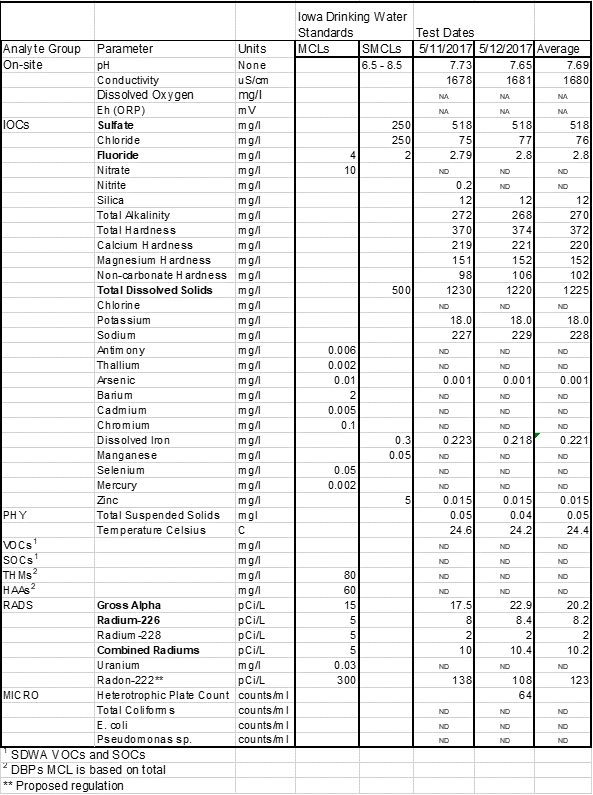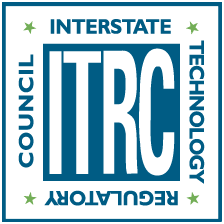Location: Des Moines, Iowa
Operator: Des Moines Water Works
Permitting Agencies: Iowa Department of Natural Resources (IDNR); U.S. Environmental Protection Agency (USEPA); Federal Aviation Administration (FAA); Polk County Public Works Department; City of Des Moines, Iowa
Current MAR Status: In operation
Year Constructed: 2015–2018
Costs: $6.1M
Project Contact Information:
Vern Rash, P.E., L.S. Engineering Project Manager
Des Moines Water Works 2201 George Flagg Parkway
Des Moines, Iowa 50321-1190
Email: [email protected]
Phone: 515-283-8733
Purpose of MAR:
- Water supply resilience
Source Water:
- Rivers/streams/lakes/reservoirs
Water Quality:
- Pretreatment required
- Post-treatment required
Recharge Technology(s):
- ASR well
Project Description
The Army Post Road ASR well facility is a joint project constructed by Des Moines Water Works (DMWW) under an agreement between DMWW, the City of West Des Moines, and the West Des Moines Water Works. The agreement follows the provisions of Chapter 28E of the Iowa Code and was executed in 2015.
The Chapter 28E Agreement states that the purpose for this project is to upgrade the capacity of the water supply infrastructure needed to support future development anticipated for West Des Moines. Included in the anticipated future development is a specific project for Microsoft Corporation, which requires a very high peak demand that could not be met without upgrading the capacity of the water supply system in the area. Construction of the Army Post Road ASR well facility is one of the upgrades needed to meet Microsoft Corporation’s water needs. It also will benefit other future water users in this portion of the DMWW service area.
DMWW owns and operates similar ASR well facilities at the L. P. Moon ground storage facility in Dallas County and at the McMullen Water Treatment Plant in southwestern Polk County. As with the L. P. Moon and McMullen ASR well facilities, the Army Post Road ASR well facility injects finished/treated drinking water into a well completed in the Cambrian-Ordovician Aquifer. The drinking water injected into the wells during this “injection mode” is stored in the aquifer for later use during periods of high-water demand in the distribution system.
During high periods of demand, the injected drinking water is withdrawn from the aquifer and returned to the distribution system. This mode of operation is called the “recovery mode” and generally occurs during late spring and early summer. Recovery mode can also be used, however, during other periods that would benefit DMWW’s operations. An example of such a period would be when the quality of DMWW’s surface water sources is poor due to high nitrate concentrations.
Receiving Aquifer
The Jordan Aquifer is the receiving aquifer for the Army Post Road ASR well. What is locally called the “Jordan Aquifer” in the Des Moines area is actually a grouping of three formations: the Root Valley and Oneota Members of the Ordovician Prairie du Chien Formation and the Cambrian Jordan Sandstone (Young 1992; Young and Siegel 1992).
- The Root Valley Member is dolomitic, fine- to medium-grained sandstone with chert. It is 80–90 feet thick in this area.
- The Oneota Dolomite is a cherty, fine- to coarse-crystalline porous dolomite about 200 feet thick. The Oneota Dolomite is characterized regionally as fractured to highly fractured with some crevices producing most of the water in wells screened in the Jordan Aquifer (Horick, P. J. and Steinhilber 1978). Karst features such as fractures, vugs, and caverns form secondary porosity within the dolomite and are common in the Oneota Dolomite in Iowa.
- The Jordan Sandstone is a fine-grained sandstone with some medium- to coarse-grained sections. The sandstone mineralogy is quartz with potassium feldspar, and the sandstone is weakly cemented by dolomite, quartz, or feldspar (personal communication with Tom Miller, Iowa Department of Natural Resources Geological Service Bureau). The Jordan Sandstone is about 50 feet thick.
Regional transmissivity of the Jordan Aquifer ranges from 2,000 to more than 4,000 feet per day, with some of the higher values estimated in Polk County where the Army Post Road ASR well is located (CH2M Hill 1996).
Table 1 is a summary of the native Jordan Aquifer water quality. The native water exceeds primary drinking water Maximum Contaminant Levels (MCLs) for several regulated radionuclides (gross alpha, radium-226, and combined radium), as well as several Secondary Maximum Contaminant Levels (SMCL) (sulfates, TDS, fluoride) highlighted in bold in Table 1. The native water is highly mineralized, making it unpalatable as a source of drinking water for most customers. The environment is slightly reducing with measurable concentrations of dissolved iron that will precipitate when in contact with oxidants. Calcium concentrations are also elevated (220 mg/L as CaCO3) but stable at native water pH (7.7).
Table 1—Native Jordan Aquifer water quality at Army Post Road ASR site

Water Quality
Water quality considerations at the Army Post Road ASR well include:
- Geochemical compatibility of source water and receiving aquifer water. Lime-softened finished water is considerably different from native Jordan Aquifer water. The source water is strongly oxidizing (400mV ORP) and has an elevated pH (9.5). Oxidation of ferrous iron and precipitation of calcium would therefore be expected at the recharge front. The extent to which these reactions occur with continued operation of the ASR well is monitored by DMWW because these reactions could impact aquifer integrity and water quality. Bacteria counts in the source water are very low due to disinfection. The source water can, however, support bacterial growth should the disinfectant be neutralized. Table 2 is a summary of source water quality during pilot testing.
Table 2—Source water quality at Army Post Road ASR site

- Quality of recovered water. Water quality deteriorates during recovery as native groundwater mixes with the injected water. During pilot testing of the Army Post Road ASR well, recovered water quality did not exceed MCLs for regulated substances until 100% recovery by volume during shakedown and cycle 1, where treated water contributed only 30% and 40% of the recovered water, respectively. The proportion of finished to recovered water increases with each successive injection cycle, so no primary drinking water standards will be exceeded when recovering injected water through 100% recovery by volume. However, the highly mineralized native groundwater caused exceedances of secondary drinking water standards for sulfate and TDS during pilot testing. In operation, DMWW monitors the TDS of the recovered water and halts recovery when the TDS approaches the secondary MCL of 500 mg/L.
- Disinfection. Approximately 680 feet of 30-inch diameter water main was installed from the ASR well house to the connection point to the water distribution system. A 30-inch diameter pipe was required to provide sufficient time for the water recovered from the ASR well to be in contact with the disinfectant and meet the required contact time value for 4-log inactivation of viruses by free chlorine before entering the distribution system. Carbon dioxide is added to the recovered water to adjust the pH downward to just below 9. This allows for a lower detention time and contact time value for the disinfection portion of the recovery process prior to the recovered water returning to the distribution system.
- Well clogging. It is possible that physical, mechanical, or biogeochemical processes will result in clogging of the ASR well such that reconditioning will eventually become necessary to maintain yield. DMWW continuously monitors the performance of its ASR wells and has not yet encountered any clogging issues after many years of operation.
Regulatory Considerations/Issues
Provisions of the underground injection control (UIC) permit issued by the USEPA include the following:
- Injection rate shall not exceed 2.5 million gallons per day (1,736 gallons per minute) nor shall the total storage volume during injection operations exceed 450 million gallons.
- Injection pressure, measured at the surface, shall not exceed 85 pounds per square inch gauge (psig).
- Monitoring provisions state that samples of the recovered water must be analyzed to determine whether any metals, such as arsenic, or radionuclides were mobilized by the injected water during storage in the aquifer. This requirement was based on the results of sampling and testing conducted during well development and pilot testing that showed concentrations of antimony and arsenic above their respective MCLs in the recovered water. There have been no detections of antimony or arsenic in testing of the recovered water conducted since the ASR system became operational.
Summary of permits required for the Army Post Road ASR well:
- Iowa Department of Natural Resources—Well Site Survey
- Iowa Department of Natural Resources—Limited Registration
- Iowa Department of Natural Resources—Construction Permit
- Iowa Department of Natural Resources—Water Use Permit
- Iowa Department of Natural Resources—General Permit No. 6 Well Discharge
- Iowa Department of Natural Resources—National Pollutant Discharge Elimination System (NPDES) General Permit No. 2
- City of Des Moines, Iowa Site Plan Approval
- USEPA Underground Injection Control Permit
- Federal Aviation Administration 7460-1 Permit


